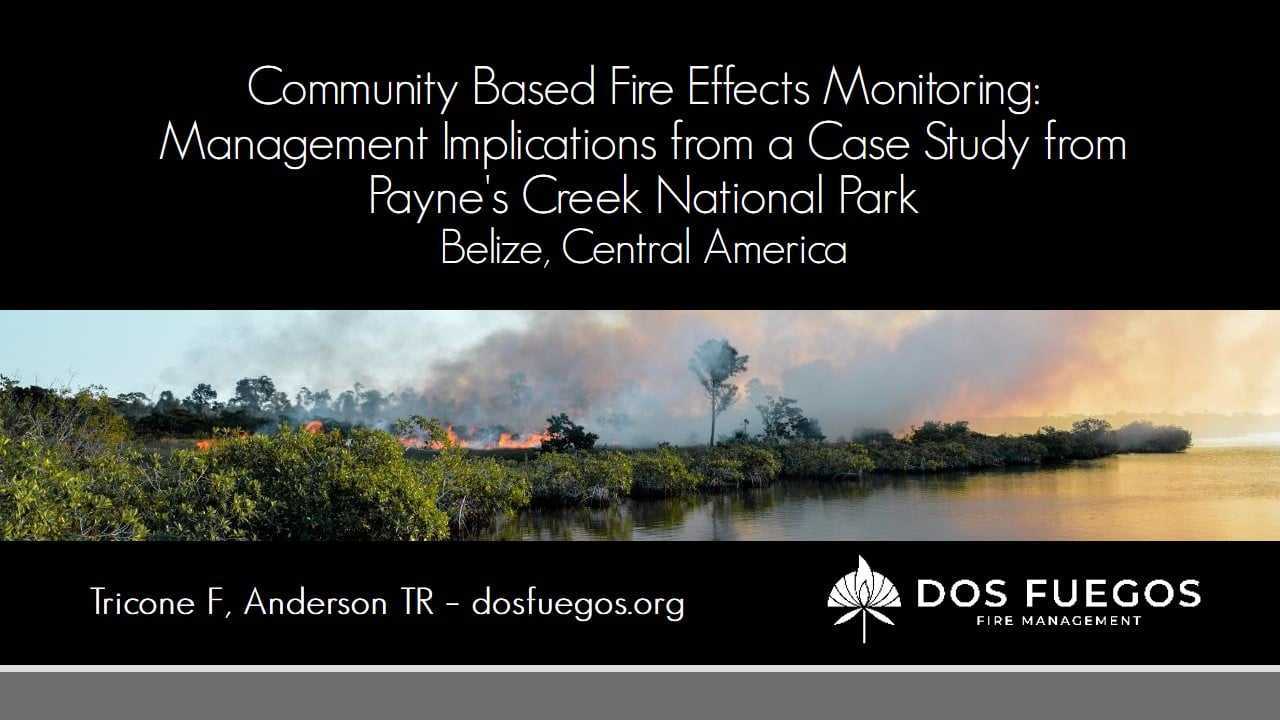-
#dosfuegos
From 2016 to 2018, Dos Fuegos led a Darwin Initiative project in Payne’s Creek National Park, Belize: “Conserving Pine Woodland Biodiversity in Belize through Community Fire Management”.
The problem the funding from the United Kingdom was attempting to address was how to reduce the risk of severe dry season wildfires on communities and biodiversity.
While affluent societies subsidize fire suppression and large suppression forces, there is no such effort in Belize.
Like many parts of the world there is no cavalry of yellow-shirt soldiers racing to suppress fires with management teams and air resources to hemorrhage money onto a fire until rain comes along and the “heroes” slap themselves on the back for a job well done and then return home with bank accounts swollen with hazard pay and overtime compensation.
In Belize, communities must respond to fire with their own ingenuity and little outside support.
There is significant indigenous knowledge in Belize and Dos Fuegos worked with the communities to integrate local insight with quantified data and science.
Together we built a science-based foundation to consider community needs and values to address fire management issues around the villages and communities who live and depend upon the fire-prone woodlands.
In collaboration with community members and protected area managers Dos Fuegos designed the first of 14 fire effects and vegetation monitoring plots in Belize to evaluate fire management practices.
We integrated fire management objectives from both protected area managers and the communities. Protected area managers focus upon reducing the threat of severe wildfires on the ecosystems, such as the regeneration of the pine population, and wildlife such as the Endangered yellow headed parrot which depends on mature pine trees for feeding and nesting. Communities use fire to protect crops, homes and clear land for farming. They also burn to enrich grasses for the species they hunt such as white-tailed deer and peccary.
To meet these sometimes conflicting objectives, it requires on the ground data collection.
Fire effects and vegetation monitoring plots are an essential informative tool to evaluate fire management program effectiveness and implement adaptive management.
After only 3 years of data collection, results highlighted the need for changing fire management practices in PCNP to meet management objectives. Current early dry season prescribed fires do not allow for survival of the pine seedlings in the open savanna of PCNP. The data suggested fire behavior that would provide better results. PCNP staff is now working into implementing wet season prescribed burning to create fire behavior and condition that would increase the survival of the pine seedlings and reduce risk of severe dry season wildfires.
Thanks to those monitoring plots, PCNP and the communities of Southern Belize are leaders in tropical ecosystems for implementing science based and adaptive fire management.
In 2019 Dos Fuegos presented the work of our collaboration with community members and local protected area managers at three major conferences: the Natural Resources Management Conference in Belmopan, Belize, the 6th International Fire Behavior and Fuels Conference in Marseille, France and the 8th International Fire Ecology and Management Congress in Tucson, USA.
The affluent world of subsidized smoke jumpers, hot shots, air tankers and wildfire victim thinking could learn a lesson from the ingenuity of the rural communities of Belize.Post is under moderationStream item published successfully. Item will now be visible on your stream.

